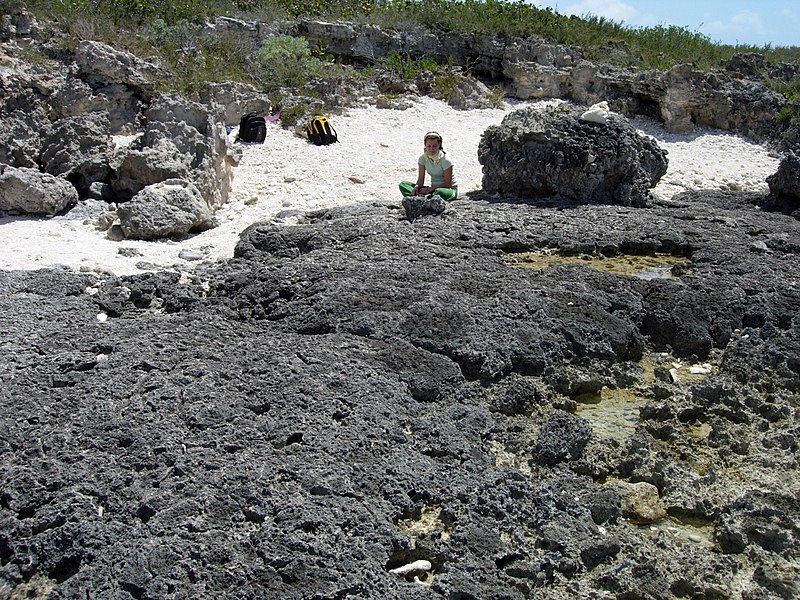by: Anthony Watts
Wikipedia says:
The Eemian was an interglacial period which began about 130,000 years ago and ended about 114,000 years ago. It was the second-to-latest interglacial period of the current Ice Age, the most recent being the Holocene which extends to the present day. The prevailing Eemian climate is believed to have been similar to that of the Holocene.
Last Interglacial Arctic Warmth Confirms Polar Amplification of Climate Change
by the Cape Last Interglacial Project Members
Guest summary by Peter Hodges of the Paper at:
It is widely accepted that the last interglacial was much warmer than the current. Forests reached the Arctic ocean across most of Eurasia, Scandinavia was an Island due to higher sea levels, and hippos swam in the Thames. As a basic introduction to the subject the Wikipedia http://en.wikipedia.org/wiki/Eemian entry is well worth a quick read.
The paper concerned, however, offers a comprehensive survey of literature concerning the Eemian interglacial, focused on the Arctic. The literature cited by the authors consists almost entirely of data from actual empirical research as opposed to “data” from model outputs. There are also four pages of citations for anyone who wishes to check the authors sources, or simply dig deeper. For those who have time, I highly recommend reading the paper in its entirety.
For those don’t have the time, the authors offer a concise summary in their conclusion:
“Quantitative reconstructions of LIG (Last InterGlaciation) summer temperatures suggest that much of the Arctic was 5C warmer during the LIG than at present… Arctic sea ice was reduced to a greater extent in the LIG than during the early Holocene due to both greater summer insolation and the larger flux of relatively warm Atlantic surface water into the Arctic Ocean during the LIG than at any time in the Holocene.”
The fundamental factor which drove Eemian temperatures higher than those in the Holocene was dramatically higher summer insolation. Northern Hemisphere insolation during the Eemian was higher than today, while Southern Hemisphere summer insolation was lower than today. Most importantly, “By the time sea level reached present in the Holocene (6 ka), the high latitude Northern hemisphere summer insolation anomaly was ca 15Wm_2, whereas at the comparable time in the LIG (130 ka) it was ca 45Wm_2, three times as large.”
How much warmer were Eemian summers? Evidence from the surveyed literature paint a consistent picture. The Atlantic-Siberian sector was typically 4-8C warmer, and Beringia 2-4C warmer. Alaska was 0-2C warmer in summer, but colder in winter. NE Canada and Greenland registered at least 5C warmer in summer. Temperate zones adjacent to the Arctic (and the planetary average) registered roughly 0-2C warmer than the present. This was apparently enough of a difference to facilitate vastly different plant and animal distributions. In some areas plant zones move 1000k north. Trees grew as for north as the Arctic Ocean and hippos swam in the Thames.
The authors argue that the polar region temperature anomalies were so much greater than the planetary average due to positive feedbacks. The warmer Arctic temperatures greatly reduced snow, land and sea ice cover relative to present. This decreased the albedo on land and sea, which resulted in warmer temperatures. While Arctic sea ice cover is rigorously debated, “the available data suggest that sea ice remained through the summer in the central basin.”
There would have been however, much more estensive leads and the ice in places was at least 800km north of the present summer extent. Reduced sea ice and increased meridianal circulation of warm, salty Atlantic waters into the Arctic dramatically warmed Arctic waters relative to the present which then allowed for a much warmer northern Eurasia.
There does not appear to be a consensus on exact ice cover in Greenland. Southern Greenland may have been ice-free or almost ice free while modeled estimates for the Northern Ice sheet are that it was reduced by 20-50%. There is at least solid evidence that some northern sites such as Dye-3 were not glaciated during the Eemian.
While the paper argues that there is indeed “polar amplification of climate change”, the conclusion is again worth quoting:
“The observational records of 20th century warming are not in perfect accord with model projections…The paleoclimate record is more direct… Most of the warming occurred in summer months, whereas model projections indicate winter warming should dominate.”
The authors then illustrate the effects of “polar amplification” during glaciation: While global temperatures are estimated to be roughly 6-8C below present at last Glacial Maximum, Arctic cooling as evidenced by Greenland Ice Sheet boreholes was 25C.



No comments:
Post a Comment